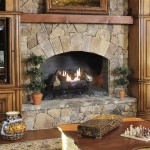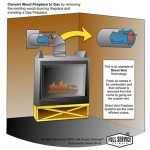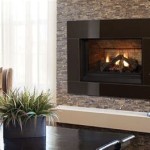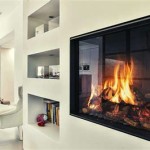Iron Fireplace Design Ideas: A Comprehensive Guide
Iron fireplaces represent a timeless design choice, blending durability, functionality, and aesthetic appeal. Throughout history, iron has been employed in fireplace construction due to its ability to withstand high temperatures and its malleable nature, allowing for intricate designs. Modern applications of iron fireplaces encompass a wide range of styles, from traditional and rustic to contemporary and minimalist, offering options to complement diverse architectural settings. The selection of an iron fireplace involves considerations related to design, functionality, installation, and maintenance, as detailed in the following sections.
Traditional Iron Fireplace Designs
Traditional iron fireplace designs often evoke historical periods, featuring ornate details and robust construction. These designs may incorporate elements such as elaborate mantels, decorative firebacks, and intricate ironwork patterns. Firebacks, positioned at the rear of the firebox, not only protect the back wall from heat damage but also radiate heat back into the room, enhancing the fireplace's efficiency. The ironwork itself can showcase motifs inspired by nature, such as leaves, vines, and flowers, or geometric patterns reflecting architectural styles of the past.
Mantels in traditional iron fireplace designs frequently serve as focal points, crafted from materials like wood, stone, or marble. The ironwork can extend to the mantel, with iron accents or supports adding to the overall visual impact. Fireplace surrounds, the decorative frames surrounding the firebox opening, are often made of cast iron, known for its durability and heat retention capabilities. Cast iron surrounds may feature raised patterns, textured surfaces, or enamel coatings to enhance their aesthetic appeal. The color palette for traditional iron fireplaces typically includes darker hues, such as black, dark gray, or antique bronze, reflecting the traditional aesthetic.
Examples of traditional iron fireplace designs include those inspired by the Victorian era, characterized by intricate ironwork, detailed mantels, and decorative tiles. Fireplaces from the Arts and Crafts movement often emphasize handcrafted elements and natural materials, with ironwork featuring stylized floral or geometric designs. Another example is the French Provincial style, incorporating elegant curves, delicate ironwork, and a focus on symmetry. Integrating a traditional iron fireplace into a modern home involves careful consideration of scale and proportion, ensuring that the fireplace complements the existing architectural elements without overwhelming the space.
Contemporary Iron Fireplace Designs
Contemporary iron fireplace designs often prioritize clean lines, minimalist aesthetics, and functional efficiency. These designs may incorporate elements such as sleek iron surrounds, frameless fireboxes, and integrated storage solutions. The emphasis is on creating a focal point that complements the overall design of the room without being overly ornate. Iron is often combined with other materials, such as glass, concrete, or stainless steel, to create a modern and visually appealing look.
Iron surrounds in contemporary designs are typically characterized by simple geometric shapes, such as rectangles, squares, or circles. The surface finishes may include brushed iron, polished iron, or powder-coated finishes in a range of colors. Frameless fireboxes, which eliminate the traditional surround, offer a seamless and unobtrusive appearance, allowing the flames to be the primary visual focus. Some contemporary designs incorporate integrated storage solutions, such as built-in shelves or cabinets, to maximize space and functionality.
The color palette for contemporary iron fireplaces tends to be more diverse than that of traditional designs, encompassing both neutral and bold colors. Black, white, gray, and metallic tones are common choices, but brighter colors, such as red, blue, or green, can also be used to create a statement piece. Lighting plays a crucial role in highlighting the design features of contemporary iron fireplaces. Recessed lighting, accent lighting, or integrated LED strips can be used to create a warm and inviting ambiance. Incorporating a contemporary iron fireplace into a modern home often involves careful consideration of the surrounding décor and architectural elements, ensuring that the fireplace complements the overall design scheme.
Rustic Iron Fireplace Designs
Rustic iron fireplace designs are characterized by their rugged appearance, natural materials, and emphasis on handcrafted details. These designs often evoke a sense of warmth, comfort, and connection to the outdoors. Iron is typically combined with other natural materials, such as stone, wood, and brick, to create a visually appealing and textured look. Rustic fireplaces may incorporate elements such as exposed brick, rough-hewn timber mantels, and hand-forged iron accents.
Iron surrounds in rustic designs often feature textured surfaces, such as hammered iron, distressed iron, or patinated finishes. The ironwork can be embellished with motifs inspired by nature, such as leaves, branches, or animal figures. Mantels in rustic iron fireplace designs are frequently made of reclaimed wood, adding character and history to the space. The use of stone, such as fieldstone, river rock, or flagstone, further enhances the rustic aesthetic. Stone can be used to create fireplace surrounds, hearths, and even entire fireplace structures.
The color palette for rustic iron fireplaces typically includes earth tones, such as brown, beige, gray, and green. These colors reflect the natural materials used in the design and create a sense of warmth and comfort. Lighting plays a crucial role in enhancing the rustic ambiance of the fireplace. Warm-toned lighting, such as candlelight or Edison bulbs, can create a cozy and inviting atmosphere. Incorporating a rustic iron fireplace into a modern home involves careful consideration of the existing architectural elements and décor. The fireplace should complement the overall design scheme without appearing out of place. The introduction of natural materials and handcrafted details can help to create a cohesive and harmonious look.
Considerations for Installation and Maintenance
The installation of an iron fireplace requires careful planning and execution to ensure safety and functionality. It is essential to comply with local building codes and regulations, particularly those related to fire safety and ventilation. Proper installation involves ensuring that the fireplace is properly vented, securely anchored, and adequately insulated. A professional installer can assess the specific requirements of the installation and provide expert guidance.
Ventilation is a critical aspect of fireplace installation, as it ensures that smoke and combustion gases are safely expelled from the home. Chimneys or flue systems must be properly sized and installed to provide adequate draft. Regular inspections and maintenance of the chimney are essential to prevent the buildup of creosote, a flammable substance that can cause chimney fires. The installation of a carbon monoxide detector is also recommended to provide an early warning of potential hazards.
Maintenance of an iron fireplace involves regular cleaning and inspection to ensure optimal performance and longevity. Cleaning the firebox and chimney regularly helps to prevent the buildup of soot and creosote. Inspecting the ironwork for signs of rust or damage is also important. Rust can be removed with a wire brush or sandpaper, and the iron can be treated with a rust-inhibiting primer and paint. Maintaining the fireplace also involves ensuring that the damper is functioning properly and that the fire screen or door is in good condition. Damaged or worn components should be repaired or replaced promptly.
Choosing the right type of fuel is also essential for maintaining the efficiency and longevity of an iron fireplace. Seasoned firewood is the preferred fuel for traditional wood-burning fireplaces. Seasoned wood burns cleaner and produces less smoke than green wood. Alternative fuels, such as manufactured fire logs, can also be used, but it is important to choose logs that are specifically designed for use in fireplaces. The use of inappropriate fuels, such as trash or treated wood, can damage the fireplace and release harmful pollutants into the air.

10 Fireplace Ideas Stunning Designs To Transform Your Home Stovax Gazco

50 Fireplace Ideas For A Warm And Cozy Home In 2025

10 Fireplace Ideas Stunning Designs To Transform Your Home Stovax Gazco

29 Fabulous Antique Fireplace Ideas Shelterness

Fireplace Design Ideas For A Cosy Home Goodhomes

Elegant Fireplace Ideas For Homes Old And New House Garden

7 Unique Ways To Remodel Decorate Your Unused Fireplace

How To Style An Antique Fireplace 27 Ideas Digsdigs

40 Modern Fireplace Ideas You Ll Love Curbly

A Black Cast Iron Fireplace With Rattan Mirror And Dark Walls White Shelving Livingroom Livingroominspo Fireplacedecor
Related Posts








